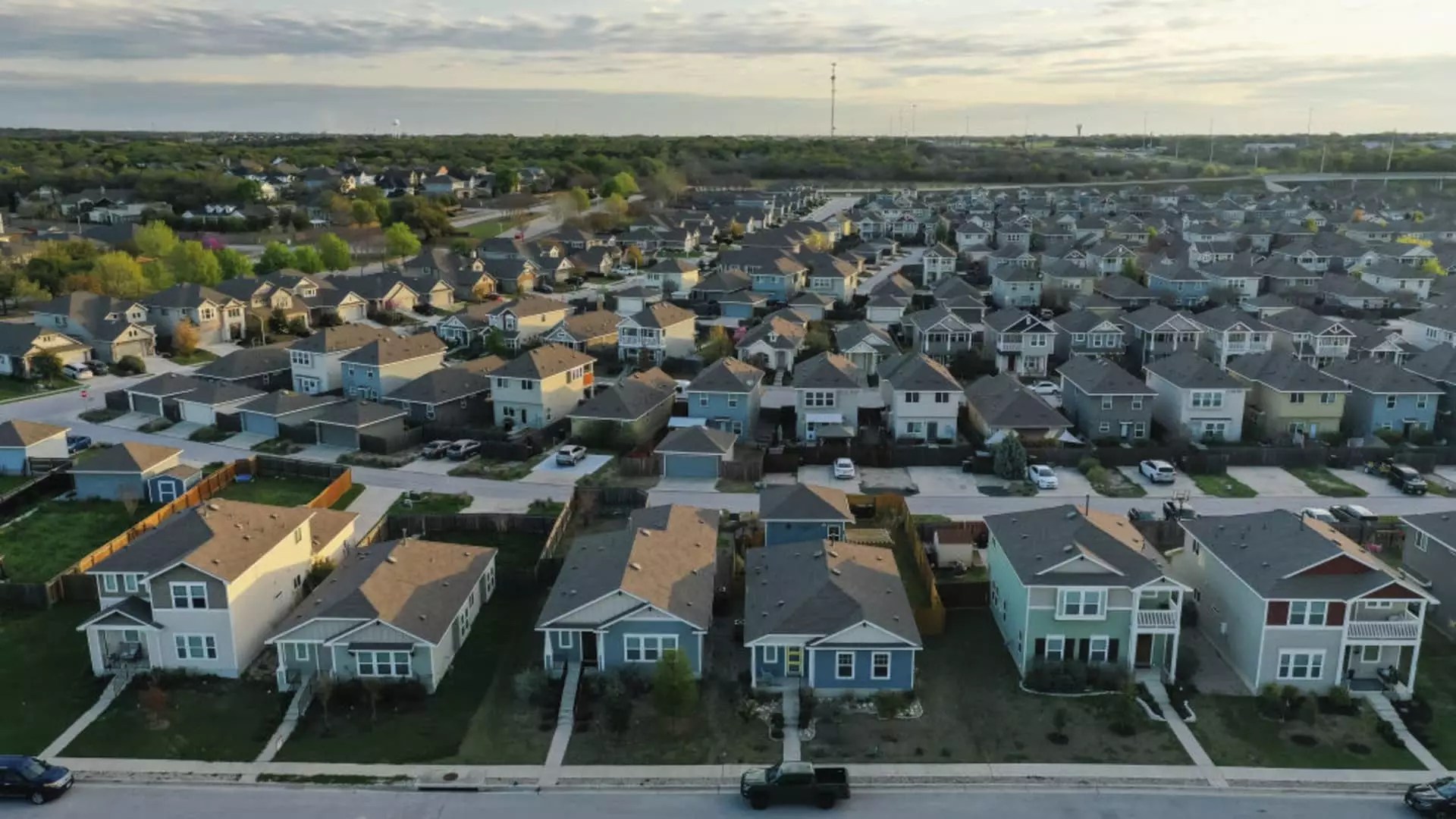The enduring notion of the American Dream, where homeownership represents stability and success, has taken a significant hit in recent years. As potential buyers face skyrocketing costs and a challenging mortgage landscape, a rambunctious trend has begun to surface in suburban areas: renting is rapidly becoming the norm. From 2018 to 2023, suburbs surrounding major metropolitan areas have seen a dramatic shift, with at least 5% of the population converting from homeowners to renters. While the numbers tell a tale of despair for aspiring homeowners, they also highlight an evolving rental market that merits deeper examination.
In larger cities like Dallas, Houston, and even traditional urban havens like Boston and Philadelphia, the trend of escalating rental markets underscores a crippling barrier for future homeowners. With interest rates nearing crisis levels reminiscent of the pre-2008 financial disaster—hovering around 7%—mortgages have become a luxury few can afford. Naturally, this has led many individuals and families to seek refuge in renting, rather than chasing an increasingly elusive dream.
The Suburban Shift: A Land of Renters
What we’re witnessing is not just an increase in renters, but a tectonic cultural shift within suburban demographics. An astonishing 15 suburbs have transformed from predominantly owner-occupied areas into majority-renter communities. In places like the Dallas suburbs, the rental population exploded by over 17%—a statistic that challenges the very idea of suburban living as synonymous with homeownership. When compared to the urban centers they surround, these suburban areas have, surprisingly, become more desirable for renters, thus flipping old paradigms on their heads.
Take Mark’s experience in suburban Chicago, for instance. He finds himself grappling with a financial wall that makes the idea of buying his current rental a steep hurdle, with costs potentially surpassing 30% of his monthly rent. For many like him, the choice to remain in a rental is a reluctant but calculated gamble, often made in hopes of accessing the suburban lifestyle they covet without paying exorbitant prices. This frustration echoes across multiple demographic lines, illuminating an emerging crisis of affordability in once accessible regions.
Renter Advocacy: The Tale of Two Cities
While some see renting in the suburbs as an unfortunate necessity, others perceive it as a systemic failure—a poignant narrative lamenting the decline of homeownership. Advocacy groups like the Tenant Union Federation emphasize that as individuals are displaced farther from urban cores, they risk losing access to essential services like transportation and employment. This uprooting leads to isolation, increased dependency on automobiles, and less community engagement—subsiding social connections that once defined neighborhoods.
The societal implications are profound, and they raise uncomfortable questions about the future of suburban living. Isn’t it troubling that being pushed into rental accommodation translates to diminished socialization, fragmented communities, and even challenges surrounding family aspirations such as childcare? Advocates argue that affordability issues are forcing people away from well-connected urban hubs into the often underwhelming reaches of suburbia, where convenience and community cohesion take a backseat to individual survival.
The Silver Lining: The Benefits of Renting
However, we must also consider the argument articulated by landlords and industry experts regarding the convenience of renting. The simplicity of a single monthly payment is often cited as a significant advantage, allowing renters to sidestep the morass of mortgage payments, unexpected repairs, and property taxes that accompany homeownership. George Ratiu, an authority from the National Apartment Association, highlights that for many families, the financial predictability of renting fits their lifestyles better than the onerous responsibilities of ownership.
Moreover, the tidal wave of development in suburban areas is creating innovative housing solutions like multifamily complexes and mixed-use developments that blend urban amenities with suburban accessibility. With the remote-work trend buoying interest in suburban areas as desirable living spaces, there exists a compelling argument that renters can enjoy a quality lifestyle—living close to work while enjoying suburban charm without the weighty burdens of ownership.
The Future of Rentership: Persistent or Transitional?
The dilemma of whether this renting trend represents a transitional phase or signals a long-term sociocultural change remains unresolved. There are voices predicting that the allure of off-suburban lifestyles will persist, keeping rental prices buoyant. If that is indeed the case, what does this mean for the next generation of homebuyers? Will the dream of owning a home be nothing more than a mirage in the distance?
For many aspiring homeowners, the prospects are bleak, but this evolving landscape presents both challenges and opportunities. As society grapples with an uncertain future, the balance between the allure of renting and the dwindling dream of homeownership will continue reshaping our communities in ways we have yet to fully understand and appreciate.


Leave a Reply